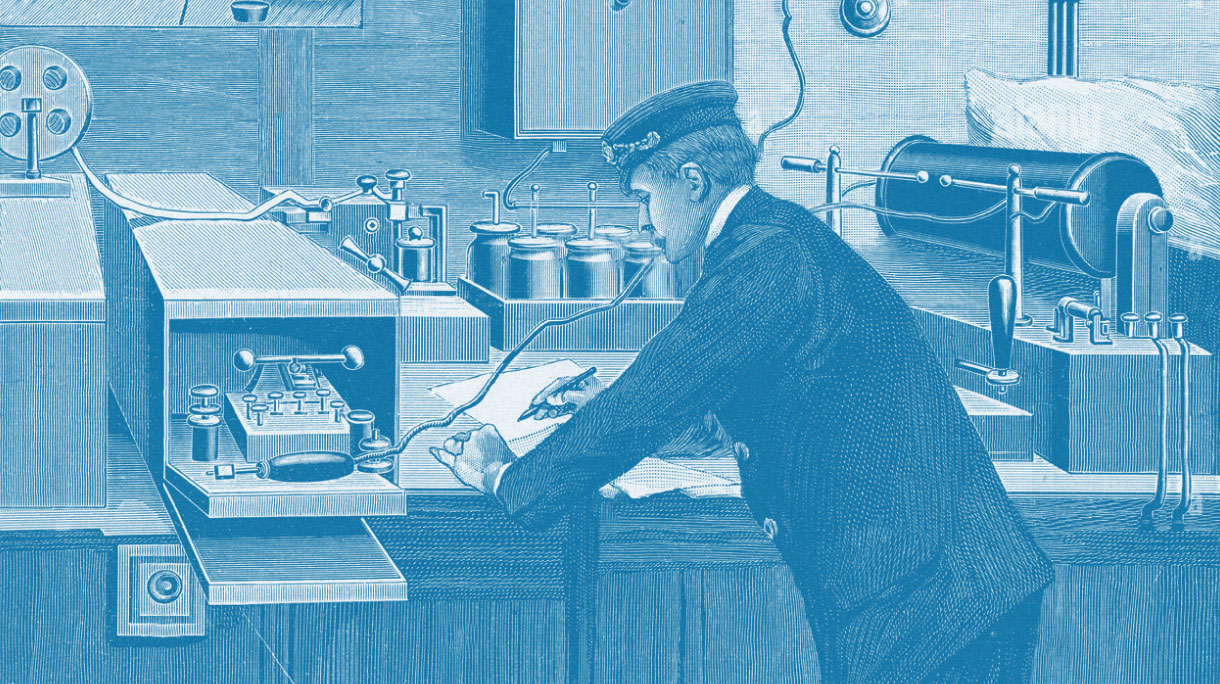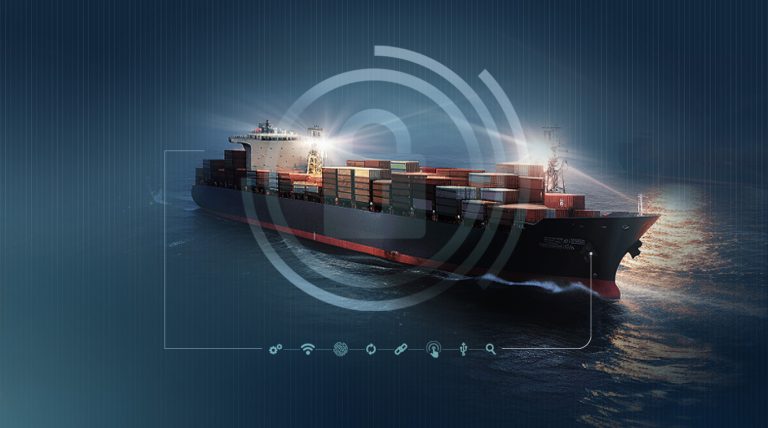In the annals of maritime history, the quest for effective communication at sea has always been paramount. As sailors ventured further from the safety of land, they encountered a challenge that demanded innovative solutions: how to convey vital information across vast stretches of water.
In an era long before the advent of telegraphs or radios, mariners needed a way to communicate quickly and effectively when separated by the expanse of open water. It is in this historical context that we embark on our journey through the evolution of maritime communication, beginning with the ancient Greeks who ingeniously employed the Polybius checkerboard as the precursor to fire signaling on their vessels.

Fire Signaling at Sea: The Polybius Checkerboard
The Polybius checkerboard, also known as the Polybius square, was a grid system used for encoding and decoding messages. It consisted of a 5×5 grid (or sometimes 6×6) with each cell containing a unique symbol or letter of the Greek alphabet. Unlike modern written languages, which rely on a linear script, the Polybius checkerboard’s strength lay in its visual representation of characters in a grid. This made it particularly suitable for signaling over long distances, as it could be seen clearly from other vessels.
The use of the Polybius checkerboard for fire signaling marked a significant advancement in maritime communication for the ancient Greeks. It allowed them to transmit crucial messages swiftly and accurately, whether for coordinating maneuvers in battle, requesting assistance, or sharing vital information about navigation and weather conditions.

490 B.C.: Heliographs - Ancient Light-Based Communication
While the ancient Greeks had already made significant strides in maritime communication with the use fire signaling, another ingenious method emerged around 490 B.C. that further enhanced their ability to convey critical messages across the sea: the heliograph, also known as shield signals.
The heliograph emerged as a groundbreaking solution, utilizing sunlight for long-distance communication. This ingenious system involved a polished shield or mirror and a skilled operator, with sunlight as the medium. Messages were encoded through sequences of flashes, offering several advantages: near-instantaneous transmission, clarity during daylight, and minimal equipment requirements. The heliograph’s role in ancient maritime communication highlights the enduring importance of swift messaging, echoing in modern maritime technologies.
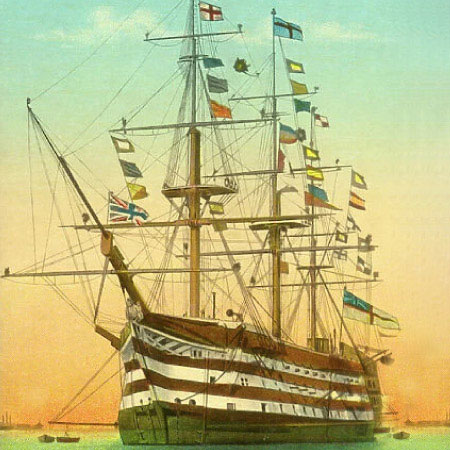
15th Century A.D.: Maritime Flag Semaphore
In the 15th century A.D., the challenges of maritime communication persisted. To bridge the gap between ships at sea or between vessels and the shore, the ingenious system of Maritime Flag Semaphore was introduced. Each flag position represented a distinct letter or signal, enabling sailors to convey messages efficiently and accurately. This innovative method became a cornerstone of maritime communication, significantly improving coordination, safety, and commerce at sea. Remarkably, the principles of flag signaling devised in the 15th century continue to find utility in modern maritime operations, demonstrating their enduring significance in connecting ships and safeguarding seafaring journeys.
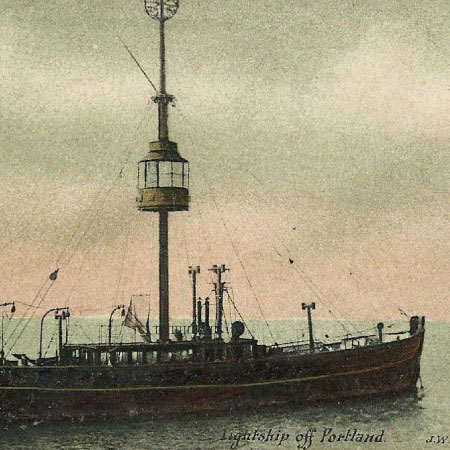
1867: Signal Lamps
In the year 1867, Vice Admiral Philip Columb of Britain introduced a groundbreaking innovation in maritime communication – the Signal Lamp. At a time when Morse code had not yet been officially adopted for naval use, Columb devised a clever system of dots and dashes, akin to Morse code, to facilitate communication between ships at sea. These signal lamps, often perched atop masts or other prominent positions on vessels, emitted sequences of light that corresponded to specific messages. Columb’s inventive approach significantly enhanced maritime communication, enabling sailors to convey information swiftly and effectively, ultimately contributing to safer voyages and streamlined coordination among ships.

1838: The Electrical Telegraph
In the year 1867, Vice Admiral Philip Columb of Britain introduced a groundbreaking innovation in maritime communication – the Signal Lamp. At a time when Morse code had not yet been officially adopted for naval use, Columb devised a clever system of dots and dashes, akin to Morse code, to facilitate communication between ships at sea. These signal lamps, often perched atop masts or other prominent positions on vessels, emitted sequences of light that corresponded to specific messages. Columb’s inventive approach significantly enhanced maritime communication, enabling sailors to convey information swiftly and effectively, ultimately contributing to safer voyages and streamlined coordination among ships.
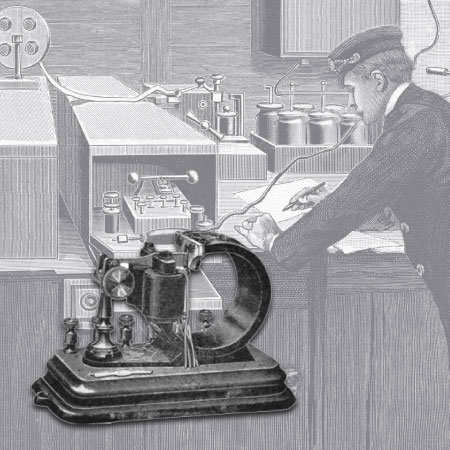
1893: Wireless Telegraphy
In the year 1867, Vice Admiral Philip Columb of Britain introduced a groundbreaking innovation in maritime communication – the Signal Lamp. At a time when Morse code had not yet been officially adopted for naval use, Columb devised a clever system of dots and dashes, akin to Morse code, to facilitate communication between ships at sea. These signal lamps, often perched atop masts or other prominent positions on vessels, emitted sequences of light that corresponded to specific messages. Columb’s inventive approach significantly enhanced maritime communication, enabling sailors to convey information swiftly and effectively, ultimately contributing to safer voyages and streamlined coordination among ships.
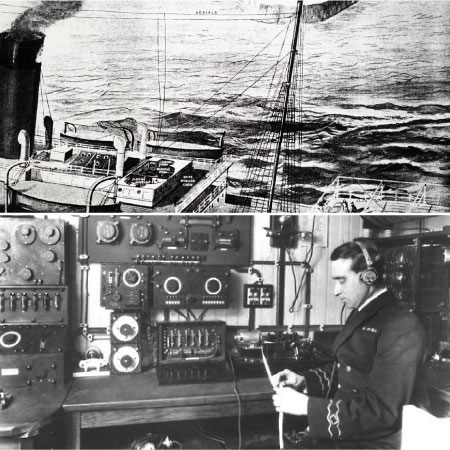
1896: Radio
Radio technology has been a cornerstone of maritime communication, connecting vessels and shores across the seas. The integration of Very High-Frequency (VHF) radio brought a seismic shift, transforming marine communications and enhancing safety. VHF radio, operating within the 30-300 MHz range, employs FM channels for ship-to-ship and ship-to-shore communication, even connecting with harbormasters. This technology, dating back to Guillermo Marconi’s pioneering work in the late 1800s, builds upon Heinrich Hertz’s ideas on electromagnetic radiation. Marconi’s collaboration with the Royal Navy enabled the use of radio waves for Morse code communication between ships and from ship-to-shore, overcoming longer distances and forever altering maritime interactions. The lifesaving value of wireless technology was demonstrated in January 1909 when two passenger ships, SS Republic and SS Florida, collided under thick fog southwest of Nantucket. Thanks to wireless communication, distress signals were swiftly sent, leading to a successful rescue operation and underscoring the vital role of radio in maritime safety. Despite its widespread use, VHF, with its frequencies under 1 GHz, presents unique challenges due to radio limitations.

20th century : Satellite Communications and VSAT
Satellite communications have propelled the maritime industry into the digital age, marking a revolutionary shift in connectivity. Very Small Aperture Terminals (VSAT), introduced in the early 1980s, were pivotal in this transformation. These compact, high-powered systems allowed ships to establish reliable, high-speed, global connections via geostationary satellites.
The concept of the geostationary orbit, a key enabler of satellite communications, originated from the visionary work of Russian theorist Konstantin Tsiolkovsky in the early 20th century. In the 1920s, Hermann Oberth and Herman Potocnik, also known as Herman Noordung, described an orbit at 35,900 kilometers (22,300 miles) altitude, aligning perfectly with Earth’s rotational period, creating the illusion of hovering over the equator. Arthur C. Clarke’s 1945 article further elucidated the orbital characteristics needed for geostationary communication.
The journey continued in the 1960s when NASA launched Syncom 1–3 satellites, facilitating live satellite communication, with Syncom 3 broadcasting the 1964 Olympics to global audiences. On April 6, 1965, Intelsat I, or “Early Bird,” marked the first commercial satellite in space.
The evolution of VSATs followed, with Equatorial Communications pioneering C-band receive-only systems in the early 1980s. LINKABIT developed the world’s first Ku-band VSAT for enterprise customers, making significant strides in connectivity. Hughes Communications later deployed the largest Ku-band VSAT network.
In 2005, WildBlue (now ViaSat) introduced Ka-band VSAT networks, while Hughes Communications expanded Ka-band VSAT sites in 2007. By 2014, Hughes celebrated one million active terminals, solidifying satellite communication’s indispensable role in maritime and global connectivity.
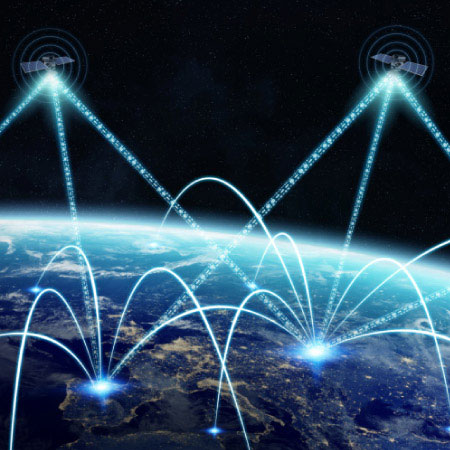
1990: The GMDSS
The Global Maritime Distress and Safety System (GMDSS) stands as a paramount advancement in maritime safety and communication. Established by the International Maritime Organization (IMO), GMDSS ensures the security of vessels and their crews worldwide. This comprehensive system integrates satellite and terrestrial technology, allowing ships to send and receive distress alerts, enabling swift response to emergencies. GMDSS incorporates a range of communication tools, including satellite, HF and VHF radios, and digital selective calling (DSC). It offers real-time weather updates, navigation warnings, and search and rescue coordination, revolutionizing maritime safety and communication.
One notable addition to GMDSS was the introduction of email communication, providing a valuable option that was previously unavailable.
In a demonstration of its commitment to staying current, the IMO approved a modernization plan for GMDSS in early 2022. With the respective amendments expected to take effect by 2024, this update will further enhance the system’s effectiveness and adaptability in the ever-evolving maritime landscape.
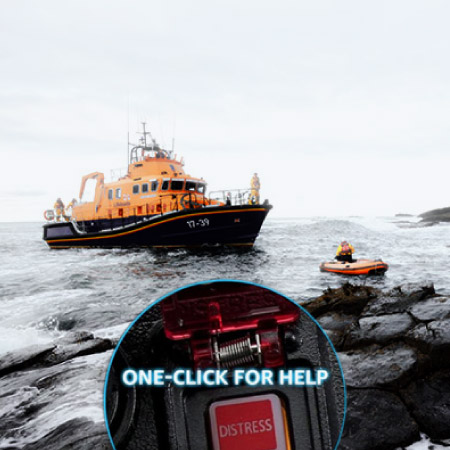
1990: Digital Selective Calling (DSC), Precision in Maritime Communication
Digital Selective Calling (DSC) is a pivotal advancement in maritime communication, revolutionizing distress alerting and routine ship-to-ship and ship-to-shore communication. This digital protocol enables vessels to transmit automated distress signals, including position data, to the nearest rescue coordination center or nearby vessels, ensuring swift response in emergencies. DSC eliminates the need for manual radio monitoring, enhancing efficiency and safety at sea. Beyond distress calls, DSC facilitates routine communication, simplifying vessel identification and coordination. This technology underscores the maritime industry’s commitment to precision, reliability, and the safety of mariners.
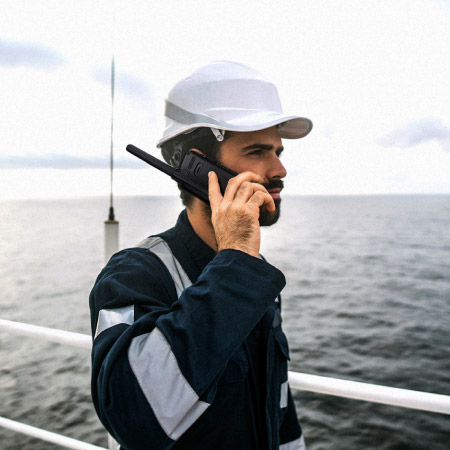
2000: GSM Communications Bridge Coastal Connectivity
The maritime industry has witnessed remarkable transformations in communication technology, and GSM (Global System for Mobile Communications) has emerged as a significant player. Originally designed for terrestrial use, GSM has found its way into maritime operations, enhancing connectivity and efficiency at sea.
Introduced in the late 1990s and early 2000s, GSM communication in maritime enables vessels to maintain contact with the shore and other ships while within range of coastal mobile networks. This technology offers a host of advantages, including voice calls, text messaging, and data transmission, allowing crews to stay in touch with loved ones and access essential information.
One notable application of GSM in maritime is its role in vessel tracking and management systems. These systems use GSM-based tracking devices to monitor a ship’s location, engine performance, and other critical data in real-time, enhancing navigation safety and operational efficiency.
While GSM technology has its limitations in terms of coverage range, it has proven invaluable for near-coastal and short-range maritime communication. Moreover, advancements in satellite-based communication have bridged the gap, providing continuous connectivity even in remote ocean regions.
As maritime communication continues to evolve, GSM remains an essential tool, offering reliable connectivity and contributing to safer and more efficient operations at sea. Its integration into the maritime landscape highlights the industry’s commitment to adapting and embracing the benefits of modern technology.
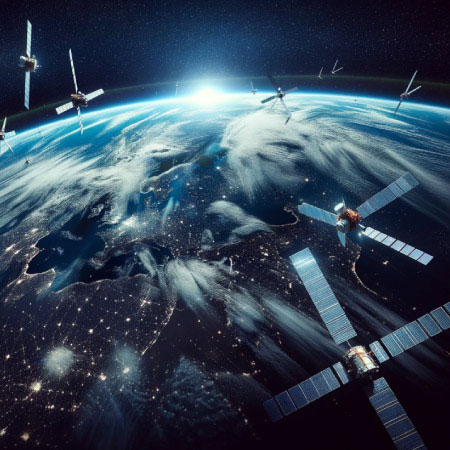
2020: LEO Satellites and the Maritime Revolution, Starlink and OneWeb's Impact
The maritime industry has entered a new era of connectivity with the advent of Low Earth Orbit (LEO) satellites, and companies like SpaceX’s Starlink and OneWeb are driving this revolution. LEO satellites orbit closer to Earth, offering several advantages over traditional geostationary satellites.
Starlink, comprising thousands of LEO satellites, and OneWeb’s growing constellation promise high-speed, low-latency internet access to even the most remote maritime locations. This transformative technology eliminates the geographical limitations that have long challenged maritime communication. Ships can now access real-time weather data, navigation updates, and high-quality voice and video communication, significantly enhancing safety and operational efficiency.
The maritime industry, including commercial shipping, fishing, and offshore exploration, benefits from reliable connectivity for crew welfare, asset tracking, and remote monitoring. Starlink’s and OneWeb’s global coverage ensures vessels remain connected in polar regions and deep-sea expanses.
However, challenges such as regulatory compliance and initial equipment costs persist. Yet, Starlink, OneWeb, and LEO satellites undeniably mark a pivotal shift in maritime communication, leveling the playing field for vessels of all sizes and redefining the possibilities for remote, connected maritime operations. As this technology continues to evolve, the maritime industry can expect even greater advancements in efficiency, safety, and connectivity.
In tracing the evolution of maritime communication, we have journeyed through centuries of innovation, witnessing the remarkable progress made in connecting ships and safeguarding seafaring journeys. From the ingenious use of the Polybius checkerboard by ancient Greeks to the groundbreaking advancements of heliographs, maritime flag semaphore, signal lamps, and the electrical telegraph, mariners have continually sought efficient and effective ways to bridge the gap of open waters. The introduction of wireless telegraphy, radio technology, satellite communications, Global Maritime Distress and Safety System (GMDSS), Digital Selective Calling (DSC), GSM technology, and Low Earth Orbit (LEO) satellites like Starlink and OneWeb have reshaped maritime communication, transcending geographical barriers and revolutionizing safety and efficiency at sea. As we stand on the cusp of even greater technological advancements, the maritime industry remains committed to embracing modern tools that enhance connectivity, safety, and operational effectiveness, ensuring a brighter future for seafarers and maritime operations worldwide.

